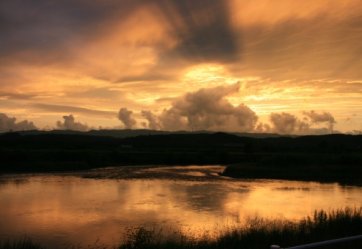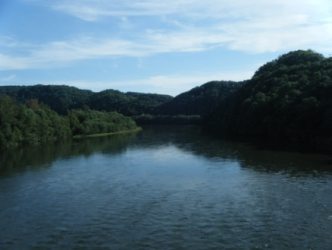Breadcrumb Navigation
- Home
- Ainu Culture and the Timeless Course of the Teshio River
Ainu Culture and the Timeless Course of the Teshio River
The Teshio River takes its name from the Ainu Teshi-o-pet, which means “river with beams”. It was so called because the rocks jutting up out of the water in various places appear to cross the river like beams.
At 256 kilometers in length, it is the fourth longest river in Japan. The river has been well known to the indigenous Ainu from long ago, and became familiar to the Japanese as well with Takeshiro Matsuura’s survey of the region during the Edo period.
In the early pioneer days, the main form of transport was by waterways. Starting around the turn of the century, boat service ran both ways between Nayoro City and the mouth of the Nayoro River. Then in 1909, a small steamboat took over the upstream route, making the journey even easier. But service was limited to the period from the middle of April to the end of November, as the river froze over in winter.
In any case, the coming of the railroad put an end to the era of water transport. Ironically, the last freight ever carried up the river by boat was a load of building materials for the new railway.
Still today the river conjures up a sense of history. You can easily imagine boats plying their way through the primeval forests that line either bank, forests that had long been home to the Ainu.
At 256 kilometers in length, it is the fourth longest river in Japan. The river has been well known to the indigenous Ainu from long ago, and became familiar to the Japanese as well with Takeshiro Matsuura’s survey of the region during the Edo period.
In the early pioneer days, the main form of transport was by waterways. Starting around the turn of the century, boat service ran both ways between Nayoro City and the mouth of the Nayoro River. Then in 1909, a small steamboat took over the upstream route, making the journey even easier. But service was limited to the period from the middle of April to the end of November, as the river froze over in winter.
In any case, the coming of the railroad put an end to the era of water transport. Ironically, the last freight ever carried up the river by boat was a load of building materials for the new railway.
Still today the river conjures up a sense of history. You can easily imagine boats plying their way through the primeval forests that line either bank, forests that had long been home to the Ainu.


